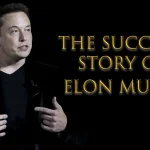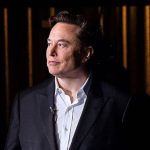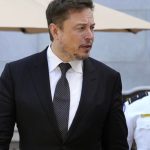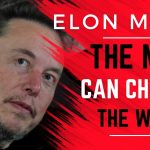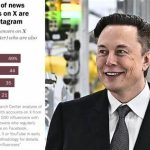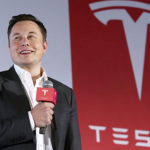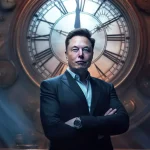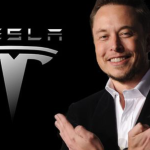🚀 Elon Musk: Architect of a New Era for the Private Space Industry 🌌
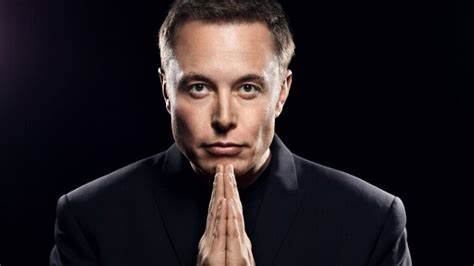
🚀 Elon Musk: Architect of a New Era for the Private Space Industry 🌌
Elon Musk—a name that rings like a clarion call for anyone captivated by technology, innovation, and the boundless possibilities of the future. He’s not just a successful entrepreneur racking up billions or a celebrity CEO basking in headlines. Musk is a visionary, a trailblazer whose audacious ideas are reshaping the world in ways few could have dreamed. Among his most transformative contributions is his role as the architect of a new era for the private space industry, brought to life through SpaceX, his rocket-fueled testament to human ambition. With SpaceX, Musk has not only cracked open the heavens but also redefined who gets to explore them, turning a government-dominated domain into a playground for private ingenuity and cosmic dreams.
The Pre-SpaceX Era: A Stagnant Sky
Before SpaceX roared onto the scene, the space industry was a fortress of bureaucracy, locked tight by governments and state-owned organizations. Think NASA in the U.S., Roscosmos in Russia, or the European Space Agency—titans of the 20th century who sent humans to the moon and probes to the outer planets. But by the early 2000s, these programs were often mired in red tape, ballooning budgets, and a pace that felt glacial compared to the tech boom on Earth. A single launch could cost hundreds of millions, with rockets discarded like one-use coffee cups after each trip. Innovation crept along, stifled by risk-averse cultures and political priorities. Space was the realm of nations, not dreamers—a prestige project, not a frontier for the everyman.
Elon Musk saw something different. Where others saw a costly relic, he saw untapped potential—a chance to slash expenses, turbocharge development, and fling open the gates to space for humanity’s next great leap. In 2002, armed with a fortune from PayPal and a mind buzzing with sci-fi-inspired possibilities, Musk founded SpaceX with a mission as bold as it was simple: make spaceflight affordable, routine, and accessible. His ultimate goal? To turn humans into a multiplanetary species, starting with Mars. It wasn’t just a business plan—it was a manifesto, one that would shake the space industry to its core and rewrite its future.
SpaceX’s Rocket-Fueled Rise 🚀
SpaceX’s journey is a saga of grit, genius, and groundbreaking milestones, each one a stepping stone to Musk’s starry-eyed vision. It began modestly with the Falcon 1, a pint-sized rocket that took three gut-wrenching failures before finally piercing the atmosphere in 2008. That fourth launch, on September 28, made history as the first privately funded rocket to reach orbit—a scrappy triumph that nearly didn’t happen, with SpaceX teetering on the edge of bankruptcy. Musk poured his last dollars into that shot, and it paid off, proving a private company could play in the big leagues.
From there, SpaceX didn’t just climb—it soared. The Falcon 9 debuted in 2010, a workhorse rocket that quickly became the backbone of the company’s ambitions. By 2012, it was docking cargo with the International Space Station (ISS), a feat once reserved for NASA’s Space Shuttle. But the real game-changer came in 2015, when a Falcon 9 booster touched down upright on a landing pad after hurling its payload to orbit. Reusability—once a pipe dream mocked by aerospace veterans—became reality. Rockets no longer burned up or sank into the ocean; they flew, landed, and flew again, cutting launch costs from $200 million to as low as $50 million by 2025. Over 200 missions later, Falcon 9 has hauled satellites, astronauts, and even a Tesla Roadster into space, its boosters racking up dozens of flights each—a revolution delivered not in theory but in flames and steel.
Then there’s Starship, Musk’s magnum opus—a gleaming, stainless-steel behemoth standing 400 feet tall, designed to carry 150 tons to orbit or 100 pioneers to Mars. Unveiled in prototype form in 2019, Starship is no mere rocket; it’s a spacecraft built for the long haul, with plans to return humans to the moon by 2026 (via NASA’s Artemis program) and plant boots on Martian soil by the 2030s. Test flights in Boca Chica, Texas, have been a rollercoaster—explosions aplenty, but each crash fuels a better design. By 2025, Starship’s hitting suborbital heights and gearing up for its first orbital run, a step toward turning interplanetary travel from sci-fi fantasy to boarding-call reality. Musk doesn’t just want to visit space—he wants to live there, and he’s building the ride to get us started.

Beyond Rockets: Starlink and a Connected Cosmos 🌍
SpaceX’s ambitions stretch beyond rockets and astronauts—it’s weaving a web of connectivity across the globe with Starlink. Launched in 2019, this constellation of low-orbit satellites—over 6,000 strong by 2025—beams high-speed internet to every corner of the planet. Forget buffering in rural Wyoming or dead zones in sub-Saharan Africa; Starlink’s delivering 200 Mbps to places where cables never reach, all for a fraction of traditional costs. It’s a cash cow, projected to rake in billions annually, but it’s also a lifeline—connecting schools, hospitals, and communities left behind by the digital divide.
Starlink’s not just about Earth, either. It’s the backbone for Musk’s Martian dreams, a network to link future colonies with home. Picture settlers on Mars streaming data—or memes—back to Earth, powered by the same tech that’s bridging gaps in the Australian outback. It’s a dual-purpose marvel: economic muscle for SpaceX and a cosmic thread tying humanity’s next steps together. Musk isn’t content with rockets alone—he’s building the infrastructure for a spacefaring civilization, one satellite at a time.
Igniting a Private Space Race 🔥
SpaceX’s success hasn’t just raised the bar—it’s lit a fire under the entire industry, sparking a private space race that’s pushing boundaries and slashing costs. Jeff Bezos’ Blue Origin is chasing reusable rockets with its New Shepard and New Glenn, aiming for lunar landings and orbital tourism. Richard Branson’s Virgin Galactic is selling suborbital joyrides, dangling the edge of space for thrill-seekers. Rocket Lab, Axiom Space, and dozens of startups are piling in, launching small satellites or dreaming up space stations. This isn’t a government monopoly anymore—it’s a free-for-all, fueled by competition and Musk’s relentless pace.
The numbers tell the tale: global space spending hit $500 billion in 2024, with private firms driving half the growth. Launch costs have plummeted—down 80% since 2010, thanks to SpaceX’s reusable playbook. Satellites are smaller, cheaper, and launched by the hundreds, turning space into a bustling marketplace. Musk didn’t just join the game—he rewrote the rules, proving private companies can outmaneuver state giants and deliver results faster, leaner, and bolder. The ripple effect? A space industry that’s less about flags and more about possibilities, from asteroid mining to lunar bases, all within reach because one man dared to dream big and build bigger.
Challenges on the Cosmic Path ⚠️
Musk’s road to the stars hasn’t been all smooth orbits. SpaceX has faced its share of fiery setbacks—Falcon 1’s early flops, Starship’s spectacular explosions, a 2016 launchpad blast that torched a $200 million satellite. Financially, it’s a tightrope—SpaceX burned through Musk’s PayPal fortune and teetered on collapse before NASA’s $1.6 billion ISS contract in 2008 pulled it back. Regulatory hurdles loom large; the FAA grumbles over launch permits, and environmentalists fret about Starship’s Texas turf. Starlink’s faced blowback too—astronomers complain its satellites clutter the night sky, disrupting telescopes. Yet Musk thrives in chaos. Every failure’s a lesson, every obstacle a chance to pivot. His leadership—part genius, part stubbornness—has turned SpaceX into a $350 billion titan by 2025, a phoenix rising from every crash.
A Visionary’s Legacy 🌟
Elon Musk isn’t just a businessman raking in profits—he’s an inspiration, a living proof that passion, creativity, and sheer will can bend reality. He’s shown a generation of dreamers that no goal’s too wild, no frontier too far. SpaceX isn’t just a company—it’s a movement, ushering in an era where space isn’t a privilege for the few but a playground for the many. From reusable rockets to Martian blueprints, Musk’s torn down the old guard’s walls and built a launchpad for humanity’s next chapter.
So let’s follow and cheer the next steps of Elon Musk and SpaceX, because the future of our species rests in their hands—or rather, their engines 🚀🌌✨. This isn’t about one man’s glory—it’s about all of us, stepping into a cosmos that’s suddenly, thrillingly within reach. Musk’s not promising a new era; he’s delivering it, one launch, one satellite, one wild idea at a time. The stars are calling—thanks to him, we’re finally answering.

